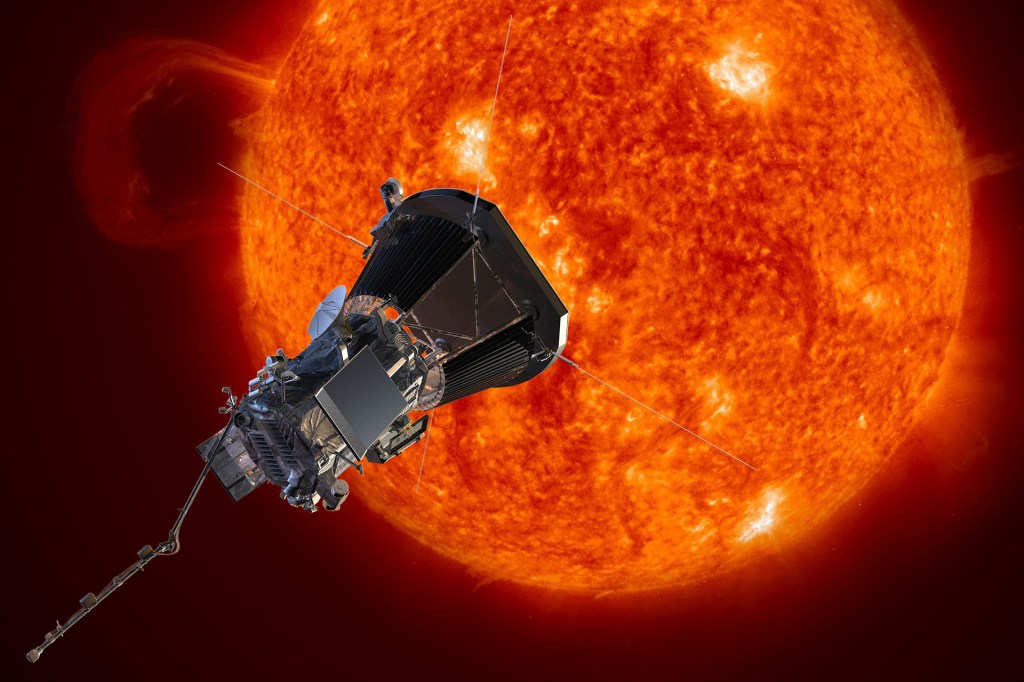Getting Close to the Sun

No spacecraft will ever land on the sun. Why? The sun is a flaming ball of gas. The gas reaches thousands of degrees Fahrenheit (F). But next year, a ship from Earth will fly closer to the sun than any ship before it. The mission is a big development for scientists. It could also be a big deal for everyone else.
In September 2018, NASA plans to launch the Parker Solar Probe. It will travel nearly 90 million miles. It will fly within 3.8 million miles of the sun. Within two months of launching, the probe is expected to reach the sun’s corona. That’s the sun’s outer atmosphere of fiery gases.
It will cost $1.5 billion to build, launch, and operate the unmanned
unmanned
 CHOMBOSAN/ISTOCK/GETTY IMAGES
not carrying a person
(adjective)
There is new technology to have an unmanned taxi pick you up.
ship. The mission will help us better understand our sun and other stars. The closest star system to ours is 24 trillion miles away. But the sun is just 93 million miles away. That is well within our reach.
CHOMBOSAN/ISTOCK/GETTY IMAGES
not carrying a person
(adjective)
There is new technology to have an unmanned taxi pick you up.
ship. The mission will help us better understand our sun and other stars. The closest star system to ours is 24 trillion miles away. But the sun is just 93 million miles away. That is well within our reach.
A Speedy Journey
The probe will use Venus’s gravity to edge closer to the sun. Ultimately, the ship will be so close that it will travel around the sun in just 88 days. That is a quick trip. It takes Earth 365 days to orbit the sun.
Temperatures in the corona can reach millions of degrees. The probe will remain in regions where things get no hotter than 2,500°F. That’s still hot for a spacecraft. A 4.5-inch-thick carbon-composite heat shield will protect its camera and scientific instruments.
A Star Quest
Our sun is special to us. But as a star, it’s rather common. The better we understand how it works, the better we understand all stars of its size and color.
Perhaps most important is what the probe may reveal
reveal
 PM IMAGES/GETTY IMAGES
to show or tell something not known
(verb)
The magician revealed the rabbit from his hat.
about solar storms. They can cause trouble. During solar storms, charged particles
particle
PM IMAGES/GETTY IMAGES
to show or tell something not known
(verb)
The magician revealed the rabbit from his hat.
about solar storms. They can cause trouble. During solar storms, charged particles
particle
 OATAWA/ GETTY IMAGES
a small piece of something
(noun)
I saw strange particles floating in my water.
stream through the solar system. They can disable
disable
OATAWA/ GETTY IMAGES
a small piece of something
(noun)
I saw strange particles floating in my water.
stream through the solar system. They can disable
disable
 JGI/JAMIE GRILL—GETTY IMAGES
to prevent something from working
(verb)
The storm disabled our Internet all weekend.
communications satellites. They can also shut down electrical grids. One study says that a powerful solar storm could cause up to $2 trillion in damage in the U.S. alone.
JGI/JAMIE GRILL—GETTY IMAGES
to prevent something from working
(verb)
The storm disabled our Internet all weekend.
communications satellites. They can also shut down electrical grids. One study says that a powerful solar storm could cause up to $2 trillion in damage in the U.S. alone.
Understanding solar storms might allow us to predict them and protect ourselves. That could make even a mission with a billion-plus price tag one of NASA’s great bargains.













